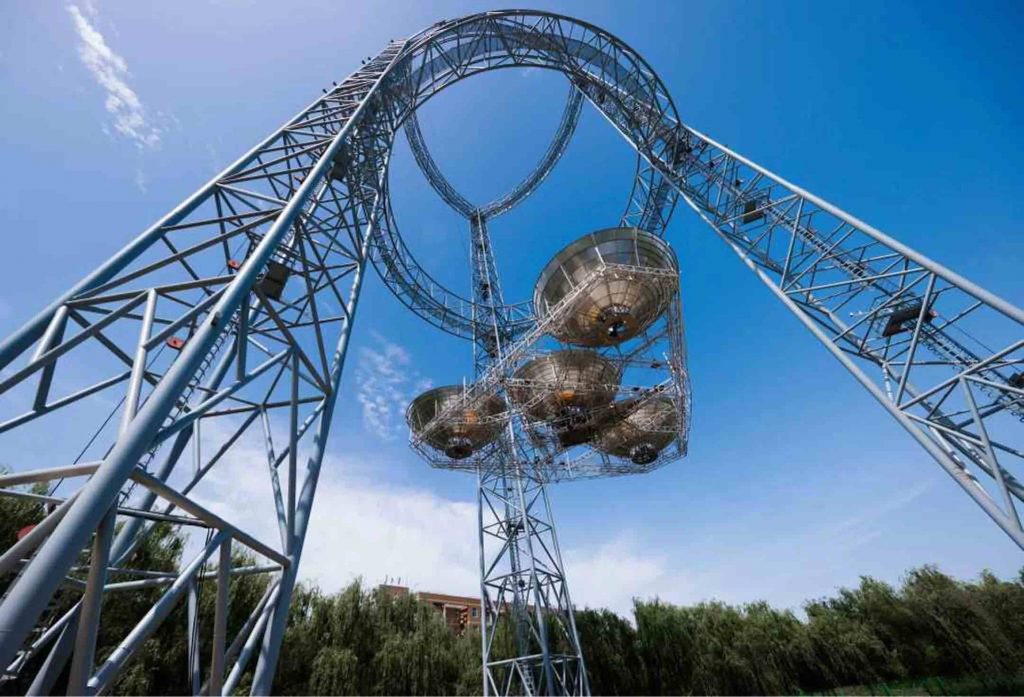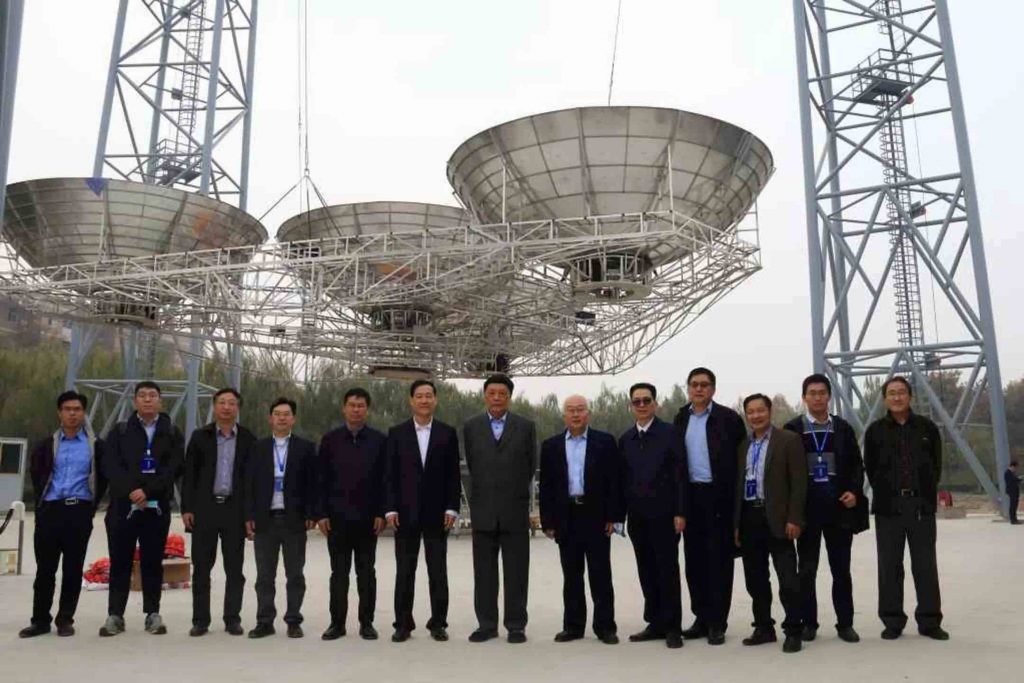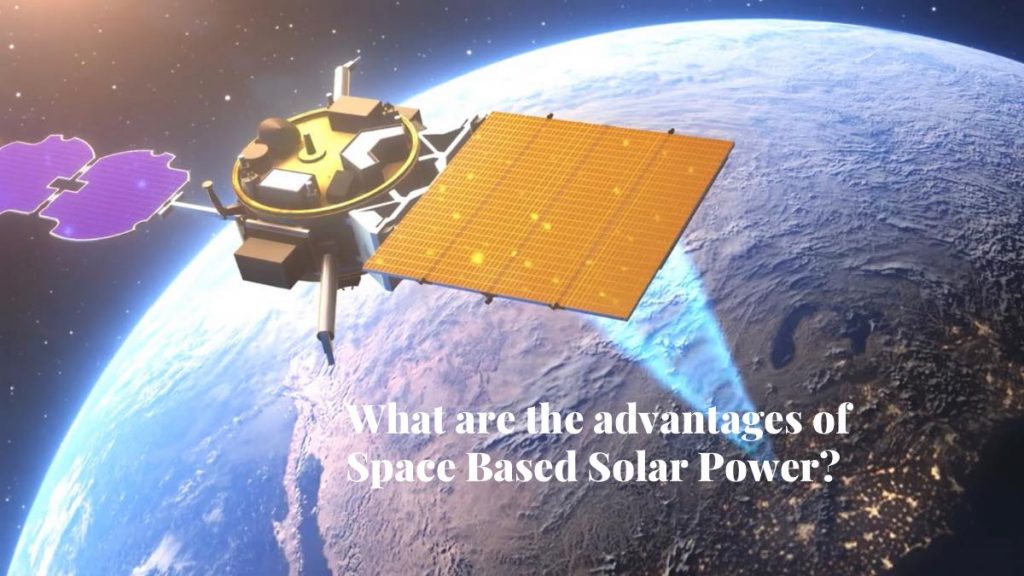Governments around the world, including Beijing, London, Tokyo and Washington are exploring the potential of space-based solar power (SBSP). The idea is to use satellites to collect solar power in space and transmit it to earth to generate electricity.
An SBSP system consists of satellites that collect solar radiation using solar panels, converting it into microwaves and transmitting it to a receiver (called a rectenna) on the earth’s surface, which converts it back into electricity and feeds it into the grid.
A study commissioned by the U.K. government and published December 2021 concludes that SBSP is technically feasible, affordable and would bring substantial economic benefits, and recommends that the government begin developing the technology.

The study found that:
Space Based Solar Power is technically feasible, and could be developed by 2040;
It offers a new source of economically competitive baseload electricity;
It requires a £16.3 billion development programme that could be achieved within 18 years;
Public funding would be required for the majority of the development, given the substantial risk, cost and timescales and;
Development of Space Based Solar Power aligns well with a range of UK Government priorities.
An SBSP system would overcome a serious limitation of terrestrial renewable energy, namely its intermittency. As such, it could enable transition to a wholly renewable, constant energy system.
Previous studies into SBSP deemed that while it was feasibly possible it would be uneconomical. That has now changed. Net-zero emissions targets have created one of the greatest challenges humankind has faced with an unprecedented demand for clean energy, and improvements in solar power technology and reusable rockets have cut costs significantly.
In China, Japan and the United States, proof-of-concept projects are well underway, though on the scale of tens of millions of dollars rather than the tens of billions that would ultimately be required.
In the U.S.
The U.S. Air Force Research Laboratory (AFRL) is the primary scientific research and development center for the Department of the Air Force. AFRL plays an integral role in leading the discovery, development, and integration of affordable war technologies for air, space, and cyberspace force.
The AFRL are currently developing a project called SSPIDR (“Space Solar Power Incremental Demonstrations and Research”), which (while they don’t intend to build a fully operational system themselves) aims to mature the technology needed to harvest solar energy in space and beam it down for use on Earth.

SSPIDR includes experiments called SPINDLE (launch 2023), and ARACHNE (launch 2024/5), which will demonstrate the orbital deployment of a scaled-down version of a power-beaming satellite and test power conversion in space using a sandwich tile built by project partner Northrop Grumman.
In China
In recent decades, China has become increasingly interested in SBSP and appears to be the leader in this area.
In 2008, SBSP was listed as a key research program. In March 2016, Zhang Yulin, a national lawmaker and deputy chief of the armament development department of the Central Military Commission, said that China would make use of the space between the earth and the moon for solar power and other industrial-development purposes.
In February 2019, construction of a ¥200 million ($42 million) testing base commenced at Bishan District in Chongqing, Sichuan. The China Academy for Space Technology’s vice-president, Li Ming, stated that China expects to be the first to build a working solar power station in space with practical value.



China is aiming to complete the test and verification of ultra-high voltage power generation and transmission in space and wireless energy transmission in the next five to ten years. The goals are the construction of a megawatt-level space solar power test station which is expected to begin in 2030, and the construction of a gigawatt-level space solar power station is expected to be completed by 2050.
According to China’s Science and Technology Daily, Li Ming, director of the Science and Technology Committee of the Fifth Academy of China Aerospace Science and Technology Corporation, told reporters that “if we can maintain and further increase research and development efforts, China is expected to become the first country in the world to build a space solar power station with practical value.”
In an interview with Science and Technology Daily, Pang Zhihao, the chief scientific communication officer from the National Space Detection Technology, said that the core application goal of the development of space solar power plants is to provide large-scale commercial power supply to the ground.
Pang added that the goal is to supply power to remote areas, islands and disaster areas, and also to be used flexibly to power ground mobile targets.
If all goes to plan, the space solar power plant will also provide power to spacecraft within “visible” range, freeing the spacecraft from the huge solar cell wings, and greatly increasing the power level and control accuracy.
Space based solar power can also be used for deep space exploration energy systems. In the future, it can also be used for space fuel production and space processing and manufacturing to realize the development of a space industry.
What’s next?
The technical and political barriers facing SBSP are significant, but if current proof-of-concept experiments show promise, much larger projects will attract public funding. Experimental prototypes will be built over the next decade, but commercial operations are unlikely before mid-century, and breakthroughs in alternative technologies in the meantime could reduce its marginal benefit or make it redundant altogether.
What would the advantages of an SBSP system be?
Uninterrupted Power supply
SBSP promises numerous advantages over other renewable sources. Affected by weather and the day-night cycle, terrestrial solar and wind power are intermittent, whereas solar power satellites can be positioned permanently in sunlight and provide uninterrupted electricity supply.
Efficiency
The atmosphere absorbs around half the energy of sunlight before it reaches the earth’s surface, but would not impede the microwaves carrying energy from the satellite to the rectenna.
Design concepts vary, but generally envisage satellites generating an amount of electricity on a par with a nuclear power plant.
Environmental impact
The rectennas would cover large areas (square kilometers), but would potentially be more discreet than wind or solar farms and less ecologically disruptive than hydroelectric dams.
Spin-off applications
Wireless power transmission could be used to ‘beam’ energy between locations on earth — to vehicles, or to disaster areas or remote locations not connected to electricity grids. Such applications would be valuable even if the technology is never deployed in space.
What are the challenges in developing an SBSP system?
Launches
The satellites would need to be much larger than any existing satellites, and would require more powerful rockets to launch them than are currently in service. The SpaceX Starship and China’s Long March 9 now under development could potentially do the job, but at this stage their operating costs cannot be reliably estimated.
Assembly
The satellites would be so large that they would need to be launched in modules and assembled in orbit, like space stations. That would require either manual assembly, a proven approach, but very expensive or robotic construction machinery.
Developing the latter could be commercially attractive, especially if the equipment were versatile enough to perform other tasks too such as servicing satellites or conducting military operations.
Pollution
The large number of launches required, more than 100 launches by China’s estimate would generate politically problematic greenhouse gas emissions in the short term, even if the project had a long-term net benefit in emissions reduction.
Safety
The envisaged transmission systems generally use microwaves that are too weak to pose any danger to life or property (hence the need for a large rectenna), but persuading the public of their safety, both during routine operation and in the event of accidents, would likely be difficult.
Interference
Increasingly scarce radio spectrum would have to be reserved for the microwave beam and potentially expensive measures taken to ensure it did not interfere with telecommunications on earth or with other satellites.
Debris
A project of this scale and complexity has significant potential for accidents, and even in the best case scenario will increase both the quantity of debris in orbit and the negative consequences of orbital collisions. International cooperation to track, mitigate and remove orbital debris would gain salience.
Vulnerability
The satellites would need to orbit at an altitude of around 36,000 kilometers. It is inherently risky to install a piece of critical national infrastructure in an extreme environment this far from national territory. Not only does space pose unique dangers in the form of radiation and meteors, but the satellite would be a highly visible target for hostile military action, which would be difficult to defend against and could be difficult to attribute.
Placing critical national infrastructure in space would both hasten the militarization of space and add urgency to arms control initiatives.
Potential weaponization
Increased interest in developing SBSP may extend the geopolitical domain of competition to geospatial dimensions. The growing competition between the US and China on earth has already resulted in competing plans to achieve scientific and economic hegemony in space, including for space-based energy, mining, manufacturing and weapons.
The capability to direct a radiation beam with precision to a chosen location on Earth has strategic implications. Reassuring potential adversaries that the satellite could not be weaponized would require transparency, but concerns about intellectual property and national security may prevent that.
Even if the satellites are designed so that they cannot be used offensively, the core technology would still have dual-use applications, which potential adversaries would consider and respond to.
The vulnerability and dual-use potential of SBSP would make a long-sought treaty banning space weapons both more valuable and more difficult.
Funding
Developing SBSP would require billions of dollars of public funding over many years. Sustaining this would likely require powerful interest groups with a stake in its continued development, because even if demonstration projects are promising, public opinion and policymakers will likely be skeptical of the technology’s potential simply on account of its novelty. Large-scale funding for SBSP would however spur development of supporting technologies and spin-offs, including robotics and launch systems.
Competitive technologies
Developments not directly related to SBSP could ultimately decide its future.
Independent development of terrestrial alternatives, for example a breakthrough in utility-scale battery technology, would solve the intermittency problem of terrestrial solar and wind. Nuclear fusion would avoid it. Either would render the major advantages of SBSP redundant.
International competition
Claims that the first country to develop SBSP will become “the Saudi Arabia of renewable energy” are questionable, even in the unlikely scenario that SBSP eventually proves cheaper than all other energy sources everywhere on Earth.
Unlike oil, technology can be copied. If any country were to realize game-changing cost savings through SBSP, others would almost certainly replicate or steal the technology. Oligopoly is more likely than monopoly.
Related article: China to build nuclear-powered moon base by 2028










